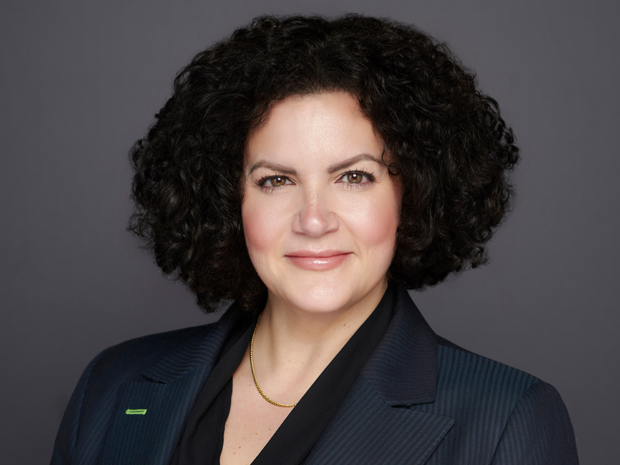- Mandatory Roth catch-up contributions:
- Certain highly paid plan participants are required to begin in 2026;
- While the proposed regulations clarify many rules related to implementation and operation of this requirement, adapting the plan may be administratively burdensome for employers.
- Increased catch-up limits:
- Became effective for taxable years beginning with 2025 for most retirement plans and 2024 for SIMPLE plans.
- Employers may optionally allow eligible employees aged 60-63 to make catch-up contributions in excess of the normal limits.
- The proposed regulations update existing regulations to authorize higher catch-up limits and provide other guidance for maintaining compliance with nondiscrimination rules.
- Autoenrollment:
- Employers must automatically enroll eligible employees into any new 401(k) and 403(b) retirement plan. Employees may opt out of participation.
- Exceptions to the autoenrollment requirement apply for certain types of employers and certain new businesses.
Executive summary:
On Jan. 10, 2025, IRS released two proposed regulations, REG-101268-24 and REG-100669-24, to implement certain changes enacted under the SECURE 2.0 Act of 2022 (SECURE 2.0). Specifically, REG-101268-24 addresses the requirement that catch-up contributions made by certain highly paid employees must be designated as Roth contributions, and the increased limit for catch-up contributions for certain retirement plan participants aged 60-63. REG-100669-24 addresses automatic enrollment requirements that apply to certain retirement plans. These proposed regulations update longstanding regulations that address implementation and compliance with the qualified plan rules.
Roth catch-up contributions
Starting in 2026, catch up contributions made by eligible plan participants of 401(k), 403(b) and governmental 457(b) plans that are aged 50 or older, and that had prior year wages in excess of $145,000 (adjusted for inflation), are required to be designated as Roth contributions. The proposed regulations provide rules that an employee is deemed to designate catch-up contributions as Roth contributions if subject to the new rule and that the plan must take steps to treat contributions as such. For purposes of identifying participants required to make Roth catch-up contributions, wages are defined as Federal Insurance Contributions Act (FICA) wages paid in the prior year by the “employer sponsoring the plan” which, under the proposed rules, is the participant’s common law employer and does not include other controlled group entities. Wages paid in the first year of employment do not have to be prorated.
FICA wages are wages paid in connection with employment by an employer (partners in a partnership, for example, do not receive FICA wages). Additionally, because FICA wages for purposes of determining the Roth catch-up requirement are defined only as those wages paid by the common law employer sponsoring the plan, it appears that FICA wages paid by other members of a controlled group would not be aggregated. It is unclear whether IRS intended to limit the definition of wages under this proposed rule in this way or if there will be a change when these regulations are finalized.
The Roth catch-up requirement only applies to the extent the plan allows participants to make catch-up contributions, and plan sponsors do not have to amend their plan to allow for Roth contributions. However, if a plan does not offer a Roth option, then only catch-up eligible participants who are not subject to the Roth catch-up requirement (i.e., eligible plan participants that earned $145,000 or less in FICA wages in the prior year) will be able to make catch-up contributions. The proposed regulations describe two new correction procedures for correcting failures where a pre-tax catch-up should have been designated as a Roth catch-up, including transferring pre-tax amounts to the designated Roth account and reporting amounts on Form W-2 or doing an in-plan Roth rollover. It is important to note that to take advantage of these new correction methods, there must be established practices and procedures in place that are designed to be compliant with the Roth catch-up rules.
For non-collectively bargained for plans, the regulations would apply with respect to contributions in taxable years that begin after the date that is six months after the final regulations are published. For collectively bargained for plans, the proposed regulations do not apply until the first taxable year beginning more than six months after the date that final regulations are issued, or, if later, the first taxable year beginning after the date on which the last collective bargaining agreement related to the plan that is in effect on Dec. 31, 2025, terminates (determined without regard to any extension of those collective bargaining agreements). Plans may choose to apply the regulations with respect to contributions in taxable years beginning after Dec. 31, 2023.
Increased Catch-up Contribution Limits
For a taxable year beginning after Dec. 31, 2024, an eligible participant making catch-up contributions to a 401(k), 403(b) or governmental 457(b) plan who attains age 60-63 during the taxable year can make increased contributions in excess of the normal catch-up limit. These participants may contribute up to 150% of the otherwise applicable dollar catch-up limit in effect for 2025. Participants aged 60-63 in SIMPLE plans may also make increased contributions for taxable years beginning after Dec. 31, 2023. These participants can contribute up to 110% of the otherwise applicable limit for 2024. For all plan types, catch-up limits (normal and increased) are subject to adjustment for inflation. The increased catch-up contribution limit is an optional plan provision.
The proposed regulations retain the established catch-up contribution rules and incorporate the higher limit for individuals attaining age 60-63. The proposed regulations also provide that a plan does not fail to satisfy the requirement that all catch-up eligible participants have the opportunity to make the same amount of catch-up contributions (“universal availability requirement”) because the plan allows participants aged 60-63 in a taxable year to make increased contributions.
The amendments relating to the increased catch-up limit are proposed to apply with respect to contributions in taxable years that begin more than six months after the date that final regulations are issued. However, the proposed regulations would permit a taxpayer to elect to apply proposed regulations relating to the higher catch-up limit for certain newly established SIMPLE plans with respect to taxable years beginning after Dec. 31, 2023, and proposed regulations relating to the higher catch-up limit applicable during the taxable year of attainment of age 60 through 63 with respect to taxable years beginning after Dec. 31, 2024.
Autoenrollment
Employers that sponsor certain 401(k) and 403(b) plans must automatically enroll eligible employees in the retirement plan at a contribution rate of at least 3% of the employee’s compensation. The rate must automatically increase by 1% each year until it reaches at least 10%, but not more than 15%, unless the employee opts out or elects a different rate. Automatic enrollment requirements do not apply to 401(k) and 403(b) plans adopted initially before December 29, 2022, any SIMPLE 401(k) plan, governmental and church plans, and certain new and small business plans.
The proposed regulations provide guidance to plan administrators for properly implementing the general requirement that newly established 401(k) and 403(b) plans automatically enroll eligible employees beginning with the 2025 plan year. The proposed regulations also address certain rules with respect to multiple employer plans, spinoffs and mergers of plans, and certain notice requirements under the Code and Employee Retirement Income Security Act of 1974 (ERISA).
The proposed regulations will apply to plan years that begin more than six months after the date final regulations are issued. Before the final regulations are applicable, plan administrators must apply a reasonable, good faith interpretation of the statute.
Takeaway
While the changes under SECURE 2.0 are not new, the proposed regulations do provide clarification of how the provisions apply. In some cases, the requirements in the proposed rules present employers with potential administrative challenges in implementation. For instance, with respect to the Roth catch-up requirements, employers will have to determine a methodology to annually identify participants required to make Roth catch-up contributions. Similar considerations apply if a plan sponsor is subject to autoenrollment requirements or wishes to permit additional catch-up contributions.
RSM contributors
-
 Christy FillingameSenior Manager
Christy FillingameSenior Manager -
 Amber SalottoManaging Director
Amber SalottoManaging Director
Related insights
Tax resources
Timely updates and analysis of changing federal, state and international tax policy and regulation.
Subscribe now
Stay updated on tax planning and regulatory topics that affect you and your business.
Washington National Tax
Experienced tax professionals track regulations, policies and legislation to help translate changes.

